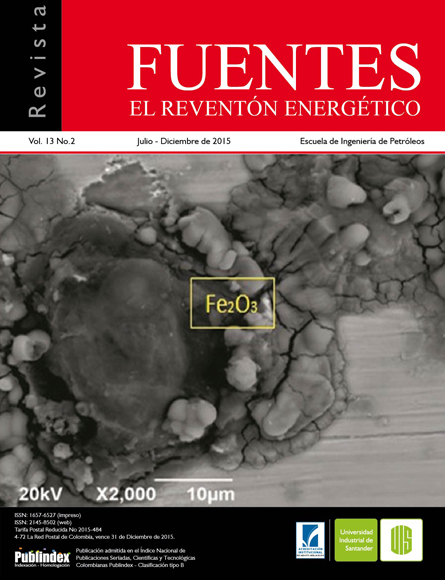Published 2015-12-03
Keywords
- Geo polymerization,
- Alkali activation,
- Alternative cement
How to Cite
Abstract
this article describes an initial study of the generation of geo-polymers associating comparatively reaction geopolimérica kaolin reported by several authors and a local ceramic clay. the geo-polymer binder material in the future could replace traditional building materials such as cement, block and others with low environmental impact in their production and use, in addition to greater mechanical and chemical resistance.
The fluorescence analysis and diffractometry RX kaolin and ceramic clay yielded information both chemical similarities and mineralogy of raw materials, broke kaolin with a siO2 / al2O3 ratio of 1.2 to verify chemical concentrations activator generating a matrix with experimental ions Na + 1, K + 1, Al + 3, Si-2 in an alkaline medium. the reactivity between the alkali ions and silicate ion showed start geo-polymerization reaction both kaolin clay and pottery whereas the siO2 / al2O3 ratio is 1.78 clay. Briquettes test is developed with both raw materials that were treated with the activating solution developed in the fi rst part of the study. The tests gave results as briquettes waterproof 5 hours of curing and resistance up to 32 megabytes in pascals compression tests.
Downloads
References
2. Ashley Russell Kotwal1), Y. J. (2014). Characterization and Early Age Physical Properties of Ambient Cured. International Journal of Concrete Structures and Materials. doi:DOI 10.1007/s40069- 014-0085-0
3. Connecticut department of energy and enviromental protection. (13 de Mayo de 2013). www.ct.gov/deep. Recuperado el 24 de abril de 2014, de http://www. ct.gov/deep/lib/deep/air/siprac/2013/fuel_sulfur_ factsheet.pdf
4. Davidovits, J. (1994). Geopolymer Institute. Firts international conference on Alkaline cements and concretes (págs. 2-10). Kiev: Geopolimer institute. Recuperado el 24 de Abril de 2014, de PROPERTIES OF GEOPOLYMER CEMENTS: http://www. geopolymer.org/library/technical-papers/8-alkalinecements-and-concretes-properties-of-geopolymercements
5. Duda, W. (1977). Manual tecnologico del cemento. Barcelona: Romargraf s.a.
6. P. Soares, A. P. (1 de 8 de 2007). Geopolimeros basados en residuos de la produccion de aridos ligeros. Materiales de construccion, 58, 23-34.
7. Palomo, A., Fernandez JImenez, A., & Criado, M. (8 de Marzo de 2004). “Geopolimero”: Una unica base quimica y diferentes estructuras. Mater Construcc, 54(275), 77-92. Obtenido de http://materconstrucc. revistas.csic.es.
